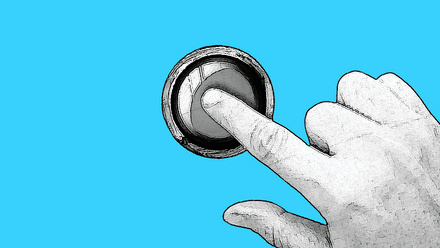April 2025 TPJ Editor choice: The VP motif in the spotlight: a conserved mechanism of cryptochromes to inhibit the COP1/SPA complex in blue light
This highlight refers to https://doi.org/10.1111/tpj.70071
The VP motif in the spotlight: a conserved mechanism of cryptochromes to inhibit the COP1/SPA complex in blue light
Plants are constantly exposed to changing light environments, which they use not only for photosynthesis but also as a cue to regulate development, including germination and flowering. Though light may appear uniform to us, it comprises a range of wavelengths from UV-B to far-red. Plants detect and respond to these variations using specialized photoreceptors: phytochromes (red/far-red), cryptochromes, phototropins, ZEITLUPE family proteins (blue), and UVR8 (UV-B). These photoreceptors allow plants to perceive light intensity, quality, and direction.
In the absence of light, the CONSTITUTIVELY PHOTOMORPHOGENIC1/SUPPRESSOR OF PHYTOCHROME A-105 (COP1/SPA) complex promotes the polyubiquitination and subsequent degradation of positive regulators of light signalling. When plants are exposed to light, the photoreceptors inhibit the COP1/SPA complex, allowing its targets to accumulate and promoting photomorphogenic responses. A key inhibition mechanism involves photoreceptors like cryptochrome 2 (CRY2) and UVR8 displacing COP1 substrates by binding to its WD40 domain via a valine-proline (VP) motif, shared among substrates and photoreceptors. This competitive binding prevents substrate ubiquitination and allows them to accumulate.
In Arabidopsis, both blue light receptors CRY1 and CRY2 bind to COP1, but differ in function and stability. CRY1 has a more prominent role in strong blue light and primarily functions in blue light-induced seedling de-etiolation, while CRY2 predominantly functions in low light and regulates flowering induction under long-day photoperiods. Both proteins bind to the COP1-WD repeat domain with their carboxy terminus (CCT), although their CCTs are different in length and show little sequence similarity. This raised the question whether CRY1 uses the same mechanism as CRY2 to inhibit the COP1/SPA complex.
The CCT domain of CRY1 contains three conserved VP motifs, with VP1 showing the highest sequence similarity with the VP motif of CRY2. Mutating the VP1 motif in CRY1 to alanine residues disrupted its interaction with COP1. In Arabidopsis, plants overexpressing CRY1 with alanine-substituted VP motif failed to complement the cry1 mutant phenotype, showing that this motif is vital for blue-light–mediated de-etiolation and anthocyanin production. To investigate if CRY1 displaces transcription factors from COP1 in a similar manner to CRY2 and UVR8, the authors used the COP1 substrates PAP2 and HY5, which bind COP1 via VP motifs. They found that CRY1 disrupts COP1-PAP2 interaction in a fashion that was dependent on the VP1 motif and promoted by full-length CRY1 protein, possibly because CRY1 oligomerization and/or cooperativity between CRY1 domains are necessary for photoreceptor function. Similar results were observed for HY5. These findings support previous structural studies showing a direct interaction between the WD-repeat domain of COP1 and a VP-containing peptide of CRY1.
To confirm the role of the VP1 motif, the authors replaced it with a VP core motif from the mammalian COP1 interactor TRIB1. This chimeric CRY1 still complemented the cry1 mutant, indicating the displacement mechanism via the VP motif is functionally conserved despite the different roles of COP1 in different species.
This study shows that multiple photoreceptors inhibit COP1 by displacing substrates through VP motifs. The various mechanisms of COP1 inhibition might offer plants a means to regulate the complex over different timescales: Nuclear exclusion of COP1 can take several hours while SPA2 degradation occurs within about 30 minutes. Light-induced conformational changes in cryptochromes can occur within seconds, enabling the CCT domain to interact with COP1 very quickly. This rapid, VP-motif–mediated substrate displacement may serve as a first-line response to light, enabling immediate modulation of COP1 activity before the slower mechanisms take effect.
Understanding how light-regulated proteins like CRY1 influence growth pathways through COP1/SPA is crucial for comprehending plant responses to environmental cues. This is especially important in high-density agricultural fields, where intense shading triggers shade avoidance responses. These responses include increased stem elongation at the expense of leaf production, ultimately reducing crop yield. Recent studies on spa3 mutants in soybeans have demonstrated that these mutants yield more than the wild type under high-density planting conditions, showing that adjusting light signalling pathways can enhance crop productivity.

Figure 1: Model of the VP-mediated inhibition of the COP1/SPA complex by CRY1.
Modified from (Trimborn et al., 2025).






